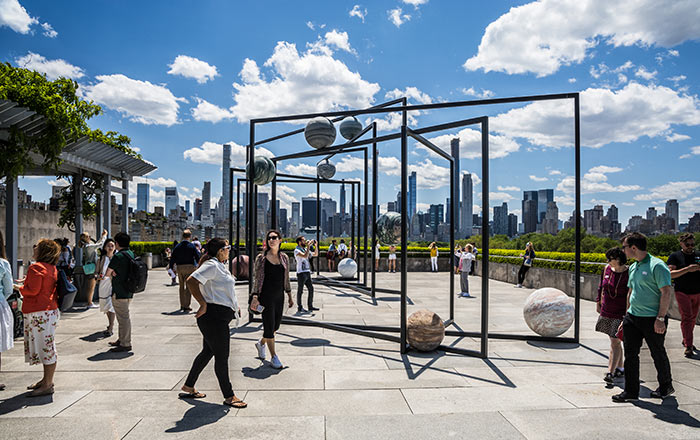Ziggurat "Black Stripes"
Designer Oeuffice
Not on view
The research laboratory and design studio Oeuffice was established by Nicolas Bellavance-Lecompte (Canadian, b. 1979) and Jakub Zak (Canadian, b. 1980) in 2011 to focus on developing innovative objects in limited editions. The designers met in Milan after studying in their native Canada and attending university in Berlin. They share a vision of contemporary utopia by which they refashion architectural design on a domestic scale. The designers based their form for this piece on one of the most fundamental architectural markers of human intention: the ancient Mesopotamian ziggurat. Like menhirs and cairns such as those at Stonehenge, Indian stupas and lingas, and the biblical Tower of Babel, ziggurats express the desire to ascend toward the heavens. The ziggurat historically has been revered by designers for its spiritual connotations and simplified geometric form. This piece, aesthetically, functionally, and thematically, fits into the chronology of designers who are drawn to Near Eastern forms and use archetypal monumental architecture as inspiration for domestic pieces. Akin to Paul T. Frankl’s Skyscraper storage unit from about 1927, a piece already in The Met’s collection (1982.30ab), this work brings the narrative of totemic industrial design into the contemporary era. The Ziggurat, with its bold black and white pattern, also visually relates to mid-century OpArt and the work of Daniel Buren, thereby synthesizing ancient structures with twentieth-century styles. However, the piece is truly representative of contemporary design in that each segment of the tower can also be used for storage, a necessary modern convenience. Oeuffice’s Ziggurat is therefore a valuable example of how ancient forms, twentieth century artistic styles, and present-day utility can be combined to create a piece that is not only functional but also demonstrates the influence of historical precedents on contemporary design.
